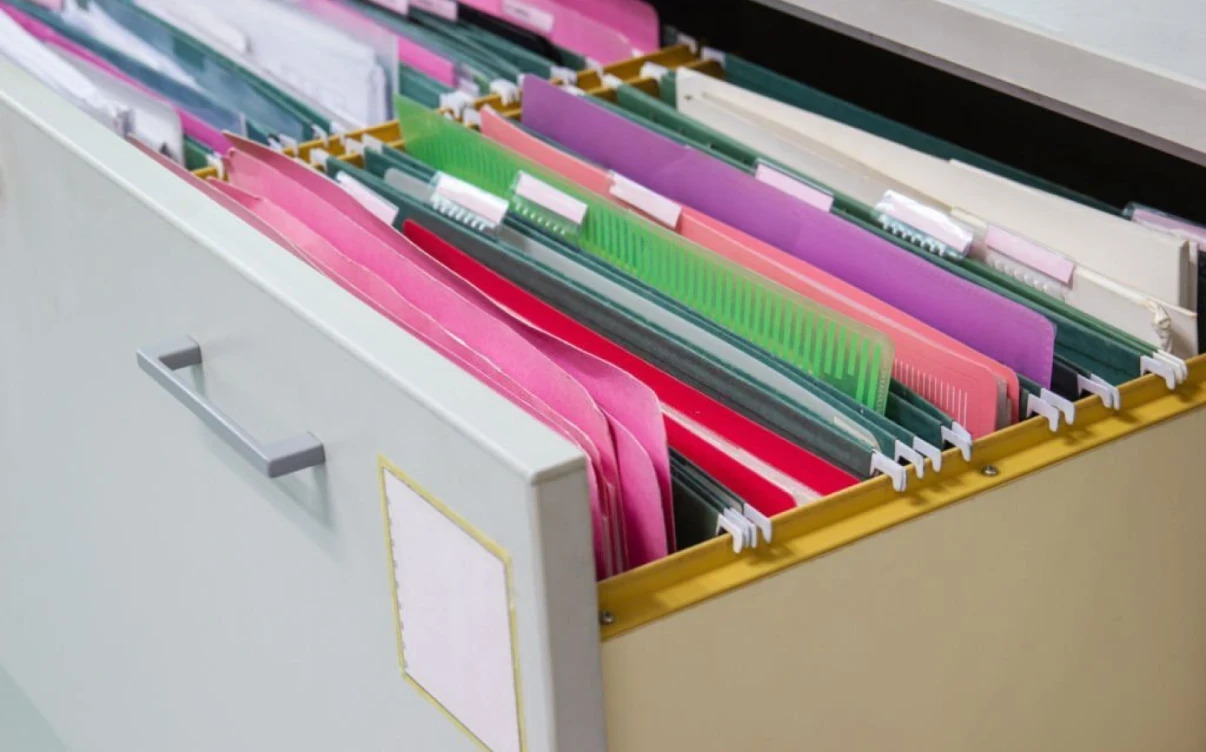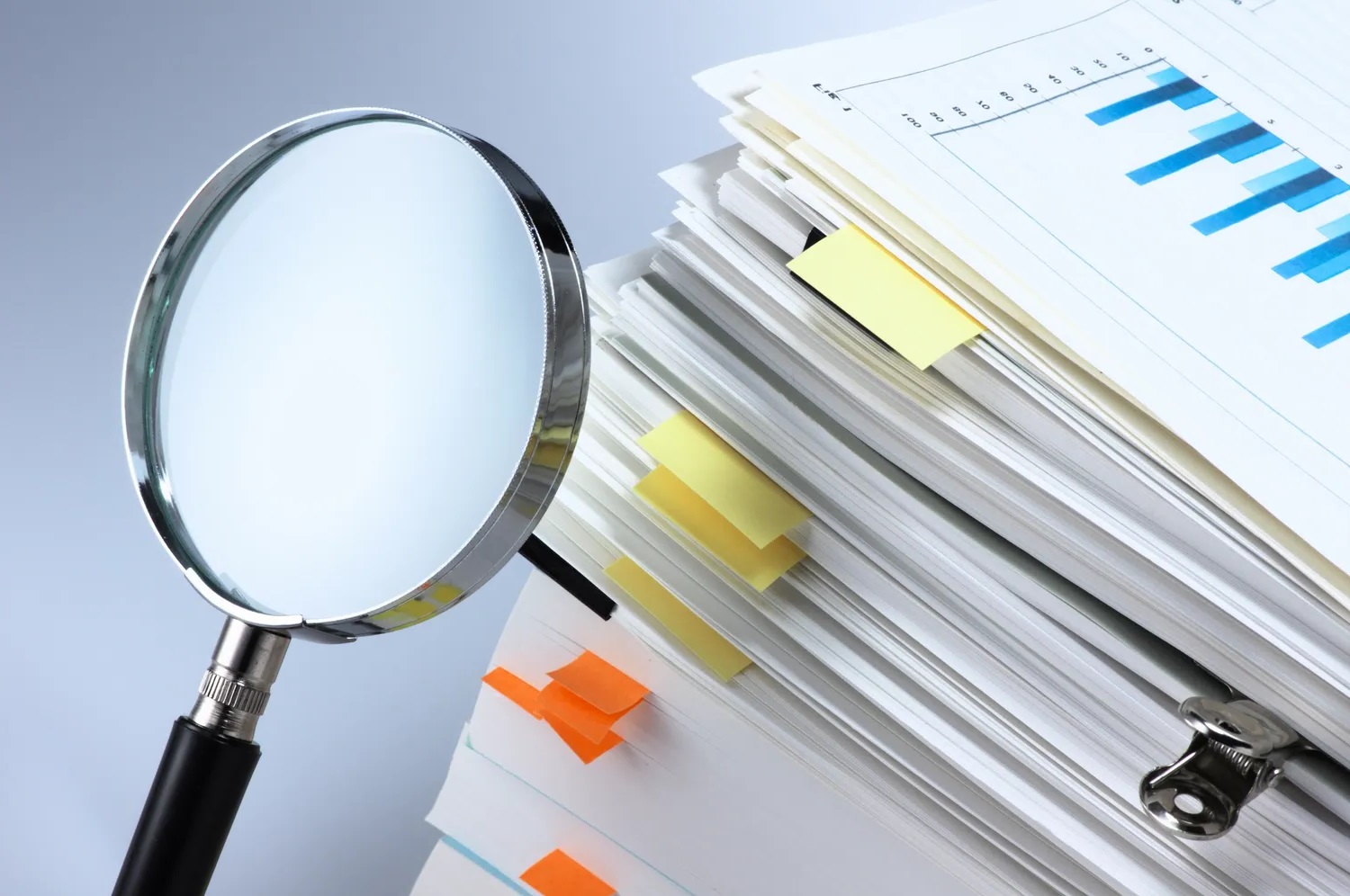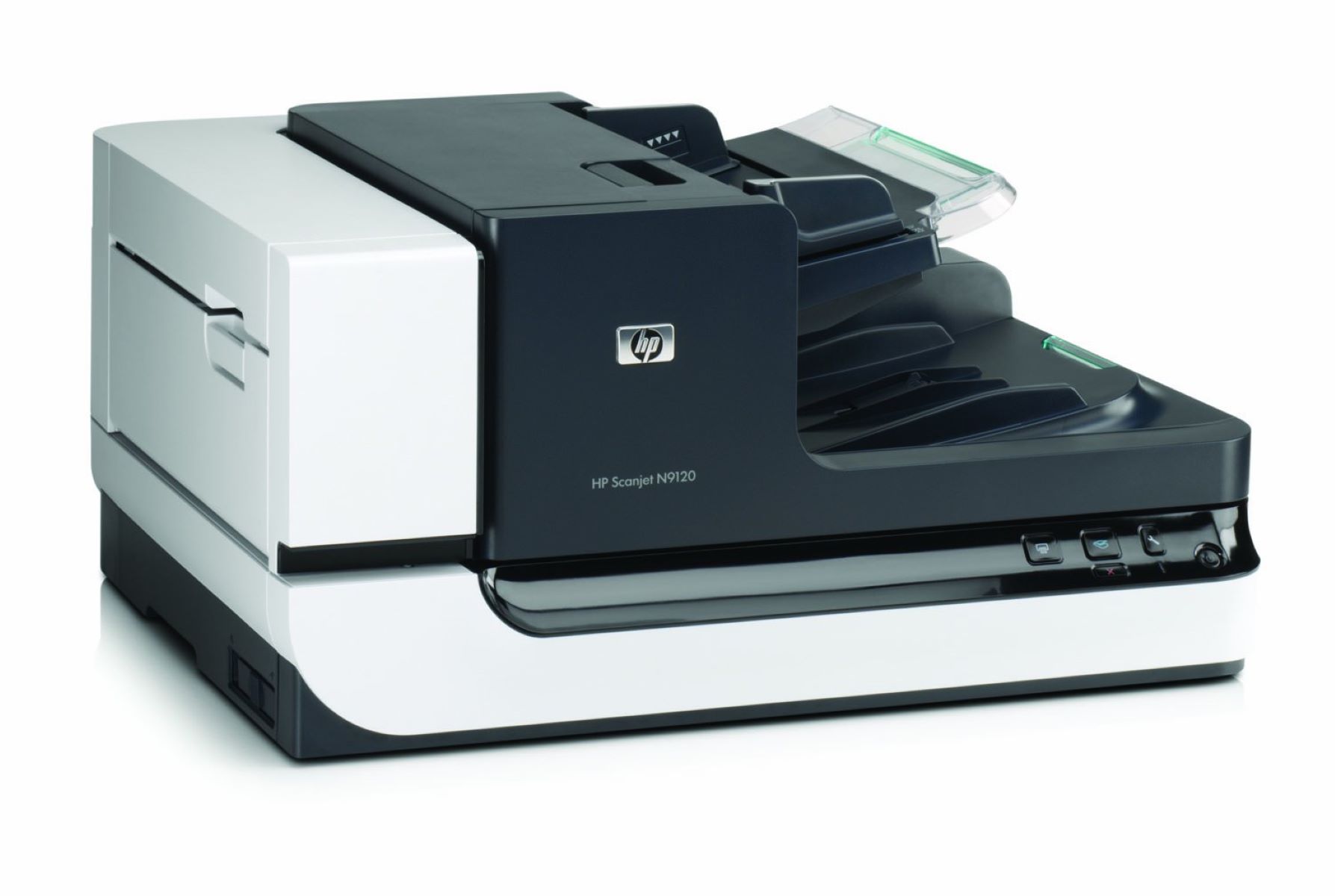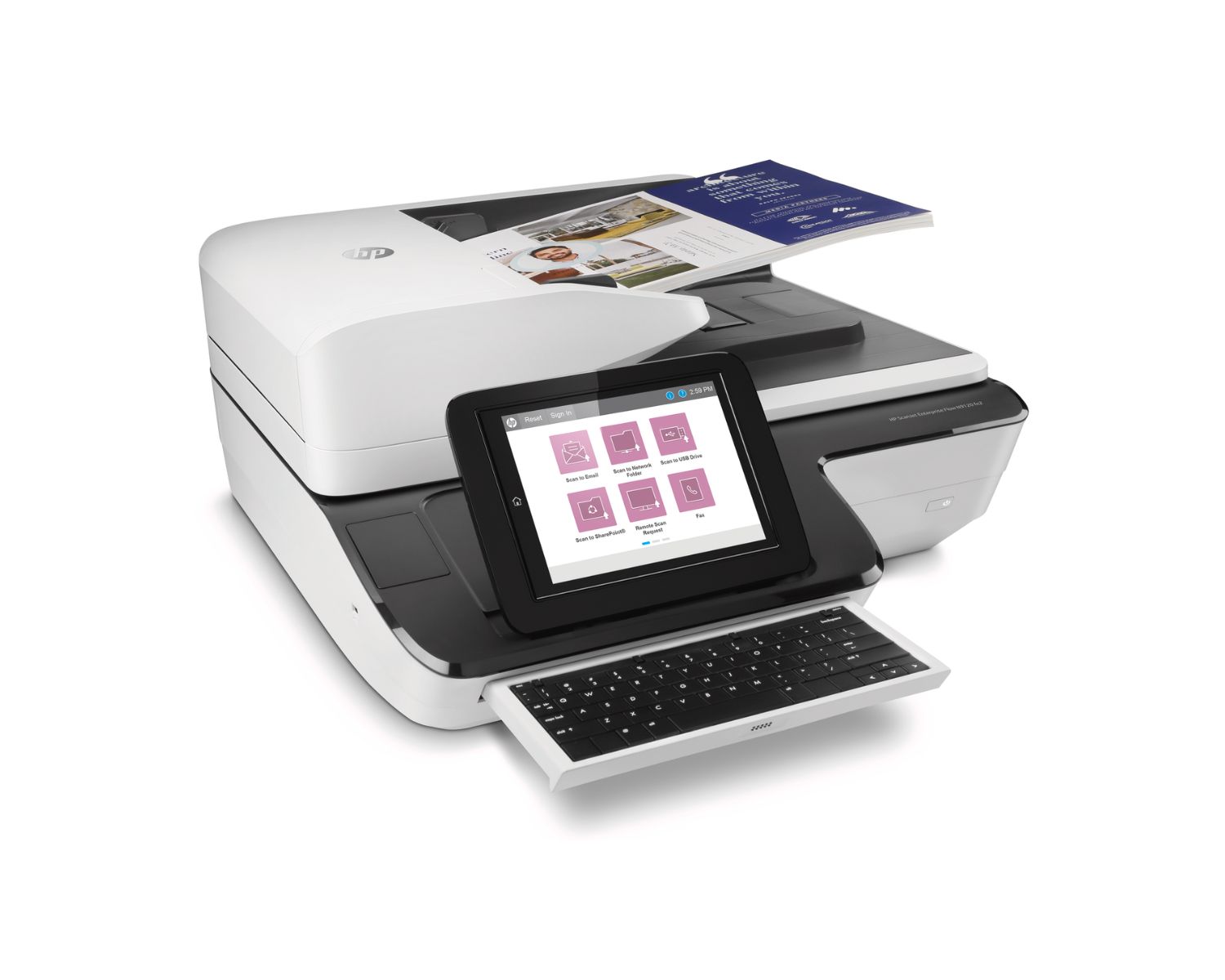

Articles
How To Store Documents
Modified: January 5, 2024
Learn the best practices for storing articles and important documents to ensure organization and easy access. Find out how to keep your documents secure and prevent damage.
(Many of the links in this article redirect to a specific reviewed product. Your purchase of these products through affiliate links helps to generate commission for Storables.com, at no extra cost. Learn more)
Introduction
Welcome to the world of digital documentation! In today’s fast-paced and technology-driven society, the need to store and organize our important documents efficiently has become more crucial than ever. Whether it’s personal files, business records, or legal documents, having a well-structured and easily accessible document storage system can save us time, effort, and unnecessary stress.
Document storage is not just about finding a place to stash our papers and files; it’s about creating a system that allows us to quickly locate and retrieve the information we need when we need it. With the advancement of technology, there are now various options available, both physical and digital, that enable us to store, manage, and protect our documents effectively.
In this article, we will explore the importance of document storage, the types of documents that should be stored, effective sorting and organizing methods, and the various options for both physical and digital document storage. We will also discuss best practices for document storage, including maintaining security and privacy, labeling and indexing, regular maintenance, and backup strategies.
By the end of this article, you will have a clear understanding of how to store your documents in a way that maximizes efficiency, accessibility, and security. So let’s dive in and unravel the secrets to effective document storage!
Key Takeaways:
- Efficient document storage is crucial for preserving information, improving efficiency, and reducing the risk of data loss. Organize and secure physical and digital documents to streamline workflows and ensure accessibility.
- Implement best practices for labeling, regular maintenance, and backing up documents to maintain an efficient and secure storage system. Prioritize document security and privacy to protect sensitive information and comply with regulations.
Read more: How To Store Documents At Home
Understanding the Importance of Document Storage
Document storage is not something that should be taken lightly. It plays a vital role in our personal and professional lives, ensuring that our important papers and files are safe, organized, and easily accessible. Here are a few reasons why document storage is so crucial:
- Preservation of Information: Documents are valuable assets that contain critical information. Whether it’s birth certificates, passports, contracts, or financial records, these documents must be protected from damage, loss, or unauthorized access. Storing them properly ensures their longevity and availability when needed.
- Improved Efficiency: When all your documents are stored in a systematic manner, it becomes easier to retrieve specific information quickly. This saves time and effort, allowing you to focus on more important tasks at hand. No more scrambling through piles of papers or searching endlessly in disorganized folders!
- Compliance and Legal Requirements: Many industries and organizations are required by law to maintain certain records and documents for a specified period. Proper storage helps you stay compliant and avoid legal consequences. It also facilitates smooth audits and inspections, should the need arise.
- Reduced Risk of Data Loss: Imagine losing all your important documents due to fire, theft, or natural disasters. The potential impact on your personal and professional life can be devastating. By implementing secure document storage measures, such as backups and offsite storage, you mitigate the risk of losing valuable information permanently.
- Enhanced Collaboration and Sharing: In today’s digital age, collaboration and sharing have become integral to many workflows. Storing documents in a digital format allows for seamless collaboration with colleagues, clients, and partners. It enables efficient sharing of information, version control, and real-time updates.
Understanding the importance of document storage is the first step in implementing an effective system. Whether you’re an individual, a small business, or a large corporation, investing time and effort into organizing and storing your documents will pay off in the long run. In the next sections, we will explore what types of documents you should store, how to sort and organize them, and the best storage methods available.
What Documents to Store
When it comes to document storage, it’s essential to identify which documents are worth storing and which ones can be discarded or digitized. While the specific documents you need to store will vary depending on your personal or business circumstances, here are some general categories of documents that should typically be stored:
- Personal Identification Documents: This includes documents such as birth certificates, passports, social security cards, driver’s licenses, and other forms of identification. It’s crucial to keep these documents secure and easily accessible.
- Financial Records: These documents include bank statements, tax returns, pay stubs, investment statements, and receipts for major purchases. Keeping a record of your financial transactions is essential for budgeting, tax purposes, and financial planning.
- Legal and Contractual Documents: Documents like leases, contracts, wills, power of attorney documents, and any other legal agreements fall into this category. Storing these documents ensures that you have proof of your legal obligations and rights.
- Insurance Policies: It’s crucial to store copies of your insurance policies, including home insurance, auto insurance, health insurance, and life insurance. These documents come in handy when filing a claim or revising your coverage.
- Medical Records: Maintaining a record of your medical history, prescriptions, test results, and other medical documents is essential for tracking your health status and providing accurate information to healthcare providers.
- Educational and Employment Documents: These documents include academic transcripts, degrees, certifications, resumes, performance reviews, and employment contracts. Keeping these records can help with job applications, further education, or professional development.
- Home and Vehicle Documents: This category includes documents related to your home, such as mortgage agreements, home improvement records, and property insurance policies. For vehicles, store documents such as title, registration, and maintenance records.
- Important Correspondence: Certain letters or emails that contain crucial information, such as legal correspondence, warranties, or letters documenting significant events, should be stored for future reference.
Remember, this is not an exhaustive list, and the documents you need to store may vary based on your specific circumstances. It’s essential to assess your needs and select documents that hold importance and long-term value. Once you have identified the documents you want to store, the next step is to sort and organize them effectively.
Sorting and Organizing Documents
Sorting and organizing your documents is a crucial step in establishing an efficient document storage system. Without proper organization, finding specific documents when you need them can be a frustrating and time-consuming task. Here are some tips to help you sort and organize your documents effectively:
- Categorize by Document Type: Start by categorizing your documents based on their type or purpose. For example, create folders or labels for categories such as personal identification, financial records, legal documents, and medical records. This will help you quickly locate documents within specific categories.
- Date-Based Organization: Consider organizing your documents chronologically, especially for financial records or correspondence. Assign a date to each document and sort them accordingly. This organization method allows for easier tracking of changes and retrieval of older documents.
- Create Subfolders or Subcategories: For larger categories, create subfolders or subcategories to further narrow down your document organization. For example, within the financial records category, you could have subfolders for bank statements, tax returns, and receipts.
- Use Descriptive File Names: When naming your electronic document files, use descriptive file names that accurately reflect the content. Avoid generic names like “Document1” or “Invoice.” Instead, use names like “John_Doe_Passport” or “2021_Tax_Return.”
- Color-Coding or Labeling: Consider using color-coded labels or tags on physical documents or digital folders to visually distinguish different categories or types of documents. This makes it easier to locate specific documents at a glance.
- Keep an Index or Inventory: Maintain an index or inventory of all your documents, whether physical or digital. This index should provide a comprehensive list of the documents you have, their location or storage folder, and any relevant details. Having an index streamlines the retrieval process and prevents duplication or loss.
- Regularly Declutter and Archive: Periodically review your documents and remove any that are no longer needed. Create an archive storage area or digital folder for storing old or inactive documents that you may need to reference in the future but don’t require immediate access to.
Remember, the goal of sorting and organizing documents is to make retrieval quick and efficient. Tailor your organization system to fit your specific needs and preferences. Implementing these sorting and organizing strategies will set a solid foundation for a well-structured document storage system.
Choosing the Right Storage Method
Now that you’ve sorted and organized your documents, it’s time to choose the right storage method. The method you select should be based on your specific needs, the type of documents you have, and your preferred level of accessibility and security. Here are some common options for both physical and digital document storage:
Read more: How To Store Paper Documents
Physical Document Storage Options
Filing Cabinets: Filing cabinets are a popular choice for physical document storage. They provide a systematic and organized way to store and retrieve paper documents. Filing cabinets come in various sizes and configurations, allowing you to categorize and label your documents effectively. Consider investing in high-quality cabinets with lockable drawers to ensure the security of your confidential documents.
Binders and Folders: Binders and folders are useful for organizing documents that need to be easily accessible and frequently referenced. You can use dividers or tabs to create sections within the binder or folder, making it easy to locate specific documents. Binders with clear plastic sleeves or pocket folders are also great for storing documents that require protection or are sensitive to wear and tear.
Boxes and Storage Containers: For documents that you need to store long-term but may not need frequent access to, boxes and storage containers are an ideal choice. Use acid-free, archival-grade boxes to protect documents from deterioration. Remember to label the boxes clearly and consider keeping an inventory or index of the documents stored within each box for easier retrieval.
Digital Document Storage Options
Cloud Storage Services: Cloud storage has become increasingly popular for digital document storage due to its convenience and accessibility. Services like Google Drive, Dropbox, and Microsoft OneDrive offer secure online storage, allowing you to upload, organize, and access your documents from anywhere with an internet connection. Cloud storage also provides automatic backups and file syncing across multiple devices.
Local Computer Storage: Storing documents on your local computer’s hard drive is another option, especially if you prefer to have direct control over your documents. However, it’s essential to create proper folder structures and backup your files regularly to avoid data loss from computer malfunctions or crashes.
External Hard Drives: External hard drives offer additional storage capacity and allow you to keep your documents separate from your primary computer. They offer portability, making it easy to transfer files between devices. Remember to keep your external hard drive in a safe place and consider periodic backups to ensure redundancy.
When choosing a storage method, consider the level of security, accessibility, and scalability that each option provides. You may also opt for a combination of physical and digital storage methods, depending on your specific needs and preferences.
Remember to regularly assess and update your storage methods as your document storage needs evolve. It’s important to review and adjust your strategy to ensure that it continues to meet your requirements in terms of document organization, accessibility, and security.
Physical Document Storage Options
When it comes to physical document storage, there are several options available to help you keep your paper documents organized, secure, and easily accessible. Here are three common physical document storage options:
Filing Cabinets
Filing cabinets are a classic choice for organizing and storing paper documents. They come in various sizes, styles, and materials, allowing you to choose one that suits your needs and preferences. Filing cabinets typically consist of drawers that can be opened and closed, providing a secure and organized space for your documents.
When using a filing cabinet, it’s important to develop a filing system that works for you. This can be based on categories, such as personal, financial, or legal documents, or it can be organized alphabetically or by date. It’s also helpful to use hanging file folders or file jackets within the cabinet to further separate and organize different types of documents. Labeling each folder or jacket with the contents or category will make it easier to locate specific documents when needed.
Read more: How To Store Old Documents
Binders and Folders
Binders and folders are ideal for organizing documents that need to be easily accessible and frequently referenced. Binders with three-ring mechanisms enable you to add and remove documents as needed, and they come in various sizes to accommodate different document volumes. Plastic pocket folders are another option and can be used to store loose papers, notes, or documents that require protection.
The key to using binders and folders effectively is to categorize your documents and assign each category its own binder or folder. For example, you could have a binder for personal documents, another for financial records, and folders for specific projects or topics. Use dividers or tabs inside the binders to create sections and further organize the documents. Label each binder or folder clearly to quickly locate the desired information.
Boxes and Storage Containers
Boxes and storage containers are a practical solution for long-term storage of documents that you may not need to access frequently. Acid-free and archival-grade boxes are recommended to protect your documents from deterioration over time. These boxes are designed to prevent damage from light, moisture, and pests.
When using boxes for document storage, it’s important to create a logical system for labeling and indexing. Keep an inventory or index of the documents stored within each box to facilitate easy retrieval when needed. You can also consider grouping boxes by year or category and using color-coded labels to quickly identify different types of documents.
Remember, regardless of the physical storage option you choose, it’s important to maintain a consistent filing and organizing system. Regularly review your documents, discard any unnecessary papers, and update your filing system as new documents come in. By keeping your physical documents organized, you’ll ensure quick and efficient access whenever needed.
Digital Document Storage Options
In today’s digital age, storing your documents digitally offers numerous advantages, such as easy accessibility and the ability to quickly search for specific information. There are several digital document storage options available. Here are three common options to consider:
Cloud Storage Services
Cloud storage services have gained immense popularity due to their convenience, accessibility, and security. Providers like Google Drive, Dropbox, and Microsoft OneDrive offer online storage solutions that allow you to upload, organize, and access your documents from anywhere with an internet connection.
Cloud storage services offer many benefits, including automatic syncing across multiple devices, easy sharing and collaboration with others, and built-in backup and recovery features. Additionally, these services often provide robust security measures, such as data encryption and two-factor authentication, to protect your documents from unauthorized access.
Read more: How To Store Important Documents
Local Computer Storage
If you prefer to have direct control over your documents and want to keep them stored on your personal computer, local computer storage is an option. You can create folders and subfolders on your computer’s hard drive to organize your documents effectively.
When using local computer storage, it’s important to establish a clear folder structure and naming conventions that make it easy to find and retrieve your documents. Regularly back up your files to external storage devices or cloud storage to prevent data loss in case of computer malfunctions, theft, or accidents.
External Hard Drives
External hard drives offer additional storage space and are an excellent option for those who require more storage capacity or want to keep their documents separate from their primary computer. These portable devices come in various sizes and can easily connect to your computer via USB or other interfaces.
With external hard drives, you can create folders and subfolders to organize your documents just like with local computer storage. Additionally, you can easily transfer files between devices by connecting the external hard drive to different computers or laptops. Remember to keep your external hard drive in a safe and secure location to protect your documents from loss or damage.
Whether you choose cloud storage services, local computer storage, or external hard drives, it’s important to regularly back up your documents to ensure redundancy and protect against data loss. This can be done by creating backup copies on external drives, using automated backup software, or utilizing the backup features provided by your chosen storage option.
Consider your storage needs, security requirements, accessibility preferences, and budget when deciding on a digital document storage option. Remember to choose the option that aligns best with your specific needs and provides the necessary features to keep your documents safe, organized, and easily accessible.
Best Practices for Document Storage
Implementing best practices for document storage will help you maintain an efficient and secure system for organizing, accessing, and protecting your important documents. Here are three key best practices to consider:
Labeling and Indexing
Labeling and indexing your documents is essential for easy retrieval and organization. When storing physical documents, use clear and descriptive labels on folders, binders, or boxes. Clearly indicate the category, subcategory, and any relevant dates or keywords on the labels. This will make it easier to locate specific documents when needed.
For digital documents, employ a consistent and logical naming convention when saving files. Use clear and concise names that accurately describe the content of the document. Consider including relevant dates or keywords in the file names to facilitate easy search and retrieval.
In addition to labeling, maintaining an index or inventory of your documents is highly recommended. This can be a separate spreadsheet, document, or database that provides a comprehensive list of the documents in your storage system, along with their locations and pertinent details. An index will serve as a quick reference guide that streamlines the retrieval process and ensures documents are not lost or duplicated.
Read more: How To Store Paper Documents Long-Term
Regular Maintenance and Updates
Regularly maintaining and updating your document storage system is crucial to keep it effective and efficient. Schedule routine maintenance sessions where you review the contents of your storage system and identify any documents that are no longer needed or have become outdated.
During maintenance sessions, remove any redundant or irrelevant documents, reorganize folders or categories as needed, and ensure that your document labels and inventory are up to date. This practice reduces clutter, prevents misfiling or loss of documents, and keeps your storage system streamlined and optimized.
Additionally, it’s important to update your document storage system as new documents are acquired. Allocate time to file newly created or received documents promptly and correctly. This practice ensures that all relevant documents are included in your storage system from the start, preventing a backlog of unfiled papers and potential confusion later on.
Backing Up Documents
Regardless of the storage method you choose, backing up your documents is crucial to protect them from loss or damage. Set up a reliable backup system to ensure you have redundant copies of your important documents.
If you’re using physical storage methods, consider making copies of essential documents and storing them in a separate physical location to guard against loss due to accidents, theft, or natural disasters.
For digital storage options, take advantage of the built-in backup features provided by cloud storage services or utilize external hard drives to create regular backups. Consider implementing an automated backup solution that ensures your documents are continuously synchronized and protected. This practice safeguards your documents from computer failures, data corruption, or accidental deletions.
Regularly test your backup system to ensure it’s working correctly and that you’ll be able to restore your documents if needed. Remember to periodically review and update your backup copies to account for any changes or additions to your document collection.
By following these best practices for document storage, you’ll maintain an organized and secure system that allows for efficient retrieval, reduces the risk of data loss, and provides peace of mind when it comes to the safety of your important documents.
Maintaining Document Security and Privacy
When it comes to document storage, ensuring the security and privacy of your sensitive information is of utmost importance. Whether you’re dealing with personal documents or confidential business records, implementing proper security measures is essential. Here are some best practices to maintain document security and privacy:
Physical Document Security
For physical documents, consider the following security measures:
- Secure Storage: Store physical documents in a secure location to prevent unauthorized access. This can be a locked room, a locked filing cabinet, or a safe. Limit access to only authorized individuals who have a legitimate need to handle the documents.
- Physical Safeguards: Use locks, security cameras, and alarm systems to protect the area where physical documents are stored. Monitor and control access to the storage area to minimize the risk of theft or tampering. Additionally, consider using shredders or secure document disposal methods to dispose of documents properly when they are no longer needed.
- Document Tracking: Implement a system to track the movement of physical documents. Use sign-in and sign-out logs or electronic tracking systems to monitor when documents are accessed and by whom.
- Restricted Access: Limit the number of individuals who have access to physical documents. This includes implementing security protocols for employees, contractors, or visitors who may have access to sensitive areas or documents.
Read more: How To Store Important Documents At Home
Digital Document Security
For digital documents, consider the following security measures:
- Secure Passwords: Use strong and unique passwords for all your accounts and document management software. Avoid easily guessable passwords and consider using a password manager to securely store and manage your passwords.
- Data Encryption: Encrypt your digital documents to protect them from unauthorized access. Encryption ensures that even if documents are intercepted or stolen, they cannot be read without the encryption key.
- Access Controls: Implement access controls for your digital documents. Grant permissions and privileges only to authorized individuals who need access to specific documents. Regularly review and update access rights as personnel changes occur within your organization.
- Secure Networks: Ensure that your computer systems and network connections are secure. Install the latest security updates and use antivirus and firewall software to protect against malware or hacking attempts.
- Employee Training: Educate your employees about the importance of document security and privacy. Train them on best practices, such as password hygiene, recognizing phishing attempts, and secure document handling. Implement clear policies and procedures regarding document security and ensure employees understand and follow them.
Data Privacy Compliance
In addition to security measures, comply with relevant data privacy regulations. Understand the legal requirements and obligations that apply to your organization, such as the General Data Protection Regulation (GDPR) or the Health Insurance Portability and Accountability Act (HIPAA). Ensure that your document storage and handling practices align with these regulations to protect the privacy of individuals and avoid legal consequences.
Regularly review and update your security measures, keeping up with new threats and technology advancements. As technology evolves, so do the methods used by hackers and those seeking unauthorized access to your documents. By staying vigilant and proactive, you can maintain the highest levels of document security and privacy.
Conclusion
Effective document storage is essential for individuals and businesses alike. Having a well-organized and secure system enables quick and easy access to important information while protecting sensitive data from loss, theft, or unauthorized access. Throughout this article, we have explored the importance of document storage, the types of documents to store, sorting and organizing methods, and various storage options.
We started by understanding the significance of document storage in preserving information, improving efficiency, meeting legal requirements, reducing the risk of data loss, and enhancing collaboration and sharing. We then discussed the types of documents that should be stored, including personal identification, financial records, legal documents, and insurance policies, among others.
Organizing your documents efficiently is crucial, and we explored methods such as categorization, date-based organization, subfolders, and clear labeling. In the physical realm, filing cabinets, binders and folders, and boxes and storage containers were highlighted as effective storage options. For digital documents, cloud storage services, local computer storage, and external hard drives provide flexible and easily accessible solutions.
To maintain an efficient document storage system, we discussed best practices, including labeling and indexing, regular maintenance and updates, and backing up documents. These practices ensure quick retrieval, reduce clutter, and safeguard against data loss or security breaches.
We also emphasized the importance of maintaining document security and privacy. Whether storing physical or digital documents, implementing measures such as secure storage, restricted access, encryption, and employee training helps protect sensitive information and comply with privacy regulations.
In conclusion, establishing an effective document storage system requires careful consideration of your specific needs, preferences, and the nature of your documents. By implementing the tips and best practices outlined in this article, you can create a well-structured, organized, and secure document storage system that streamlines your workflow, saves time and effort, and ensures the longevity and accessibility of your important documents.
Remember, document storage is an ongoing process that requires regular maintenance and adaptability. Continuously review and update your storage system to accommodate changing needs and technological advancements. By doing so, you will ensure that your document storage remains efficient and effective in the ever-evolving digital landscape.
Frequently Asked Questions about How To Store Documents
Was this page helpful?
At Storables.com, we guarantee accurate and reliable information. Our content, validated by Expert Board Contributors, is crafted following stringent Editorial Policies. We're committed to providing you with well-researched, expert-backed insights for all your informational needs.











0 thoughts on “How To Store Documents”